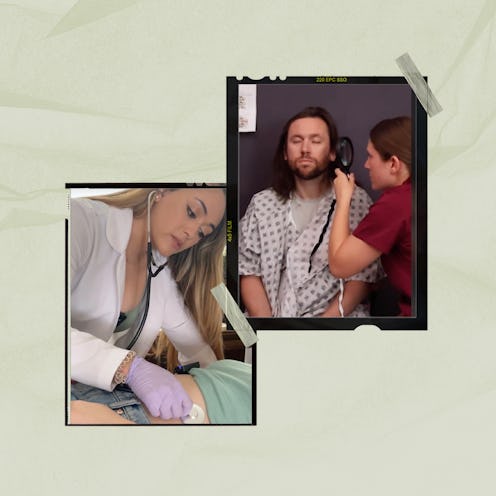Viral
Behind The Allure Of The Medical ASMR You're Seeing On TikTok
There's an entire sector on social media dedicated to the sounds of latex gloves, stethoscopes, and tongue depressors.
When it comes to ASMR videos that pop up on your TikTok FYP, you’ve certainly seen folks whispering into a microphone or crunching on a honeycomb. But ASMR styles are shifting in favor of something you might not expect: medical examinations.
In these videos, an ASMR artist — who may or may not have an actual connection to the medical field — performs various soft-spoken medical examinations on either a patient or the viewer. Think spine evaluations, cranial nerve assessments, basic checkups, and even gynecological exams, enhanced by the sound of latex gloves, stethoscopes, and tongue depressors. All, of course, are meant to relax the viewer in the way all ASMR content does: via soft noises that emit a tension-relieving, sometimes even sleep-inducing response for the listener.
Of course, it might sound like a contradiction to relax while watching someone visit a place most people dread going to; doctor’s offices aren’t exactly a delightful locale. But Hannah B., a full-time medical ASMR creator — who doesn’t have a medical background — believes this content is actually comforting because it makes viewers feel safe. “It gives that sense of, ‘I'm OK, someone's here that knows what they're doing, I can relax now,’” she tells Bustle. “I think doctors, nurses, and people in the healthcare industry do that for us. When we're not feeling well, they can step in and say, ‘Hey, I can help you.’ They just have a commanding presence.”
Hannah credits interest in this particular sector of ASMR to a viral YouTube video that came out in 2011 of neurologist Dr. James Kelly performing a cranial nerve exam on hockey player Pat LaFontaine. While LaFontaine was simply at a regular appointment, it struck a chord with people who watch ASMR videos (like herself) because of the satisfying sounds created by the doctor and his medical instruments.
“This category of ASMR still emits just really soft, gentle sounds,” says Hannah. “The person [in the video] is talking about things that they know about, and it just creates this really relaxing atmosphere.” After becoming a fan and watching hours of videos, Hannah began to learn medical terminology, and eventually began performing medical ASMR on her fiancé, Jeremy, to share with her 785K followers.
Another theory behind the appeal of medical ASMR? Hannah chalks it up to the simple human longing for physical touch — and even the benefit of overcoming the fear of being seen by a doctor. “Watching this on screen can be very powerful for people who are experiencing anxiety about an upcoming doctor’s visit,” she says. “I've had many people say, ‘I was really nervous about this appointment, but I watched some of these videos, and it was so kind and calm.’”
While more traditional forms of ASMR still have massive followings, Hannah sees medical ASMR as a budding category in its own right. “This sort of roleplay ASMR is definitely on the rise. It’s not new by any means, but it’s gaining popularity like I've never seen before.”
This article was originally published on
